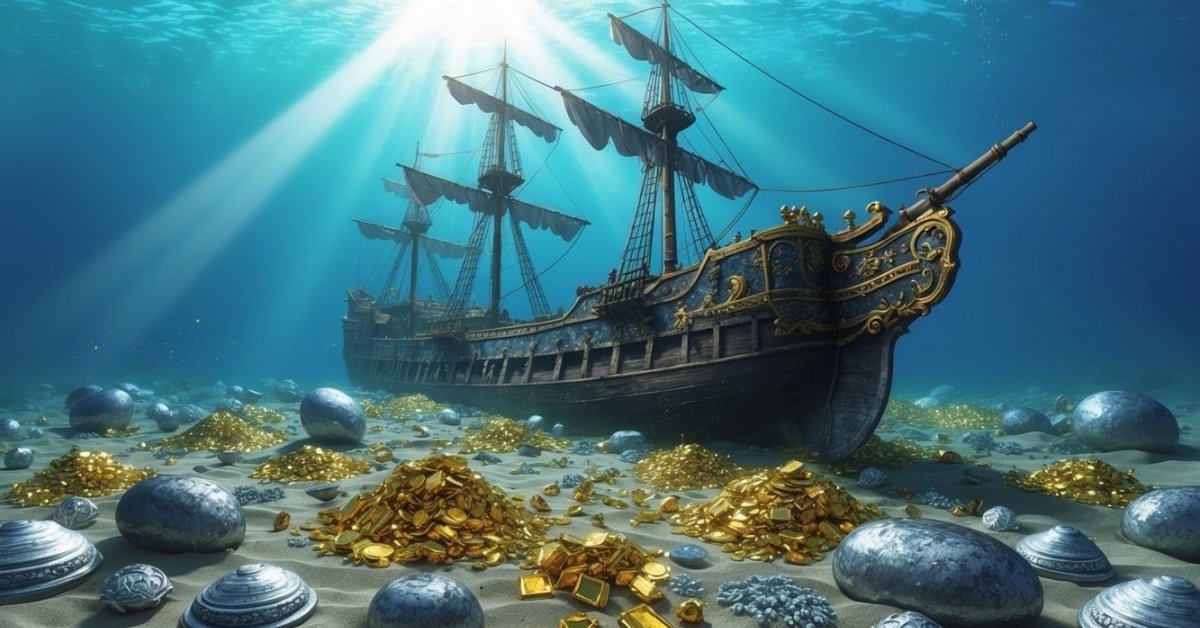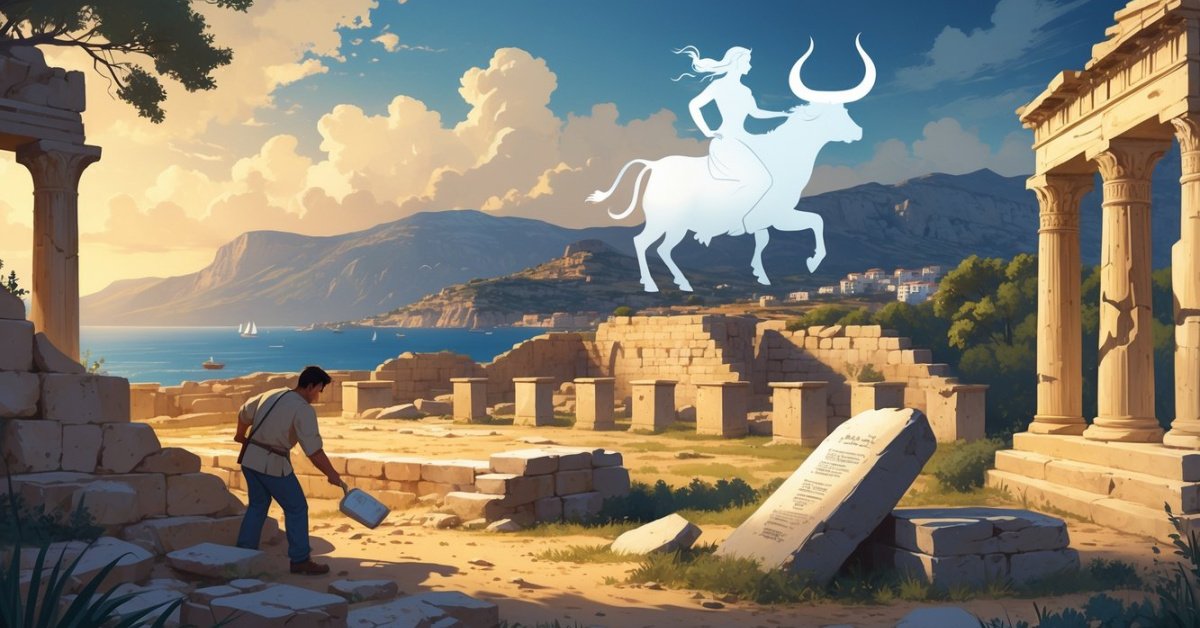The Flor de la Mar was a big Portuguese ship that sailed the seas over 500 years ago. It was built in 1502 and took part in many important events in the Indian Ocean. The ship’s name means “Flower of the Sea” in English.
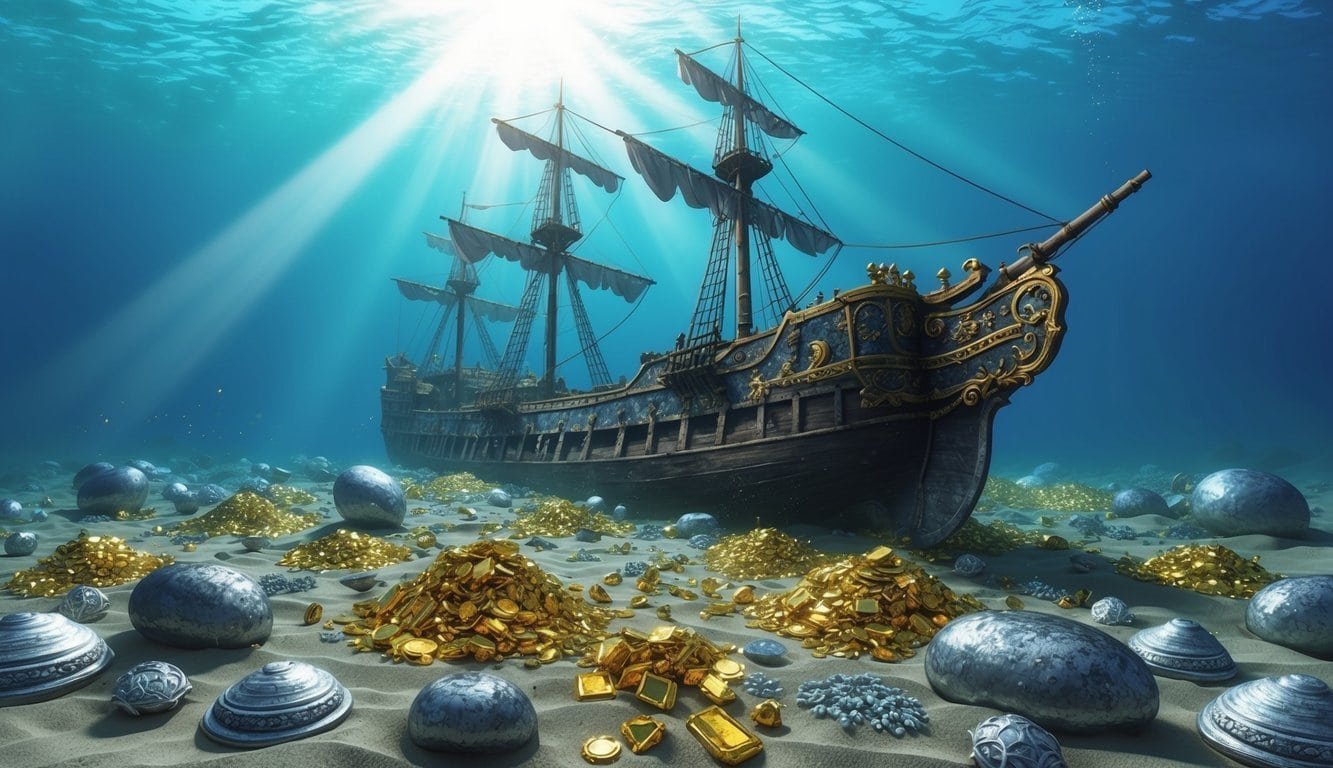
In 1511, the Flor de la Mar sank off the coast of Sumatra. It was carrying a huge amount of treasure at the time. The lost riches from this shipwreck are thought to be worth about $2.5 billion today.
People have been trying to find the Flor de la Mar’s treasure for centuries. The ship was 118 feet long and 111 feet tall. It was perfect for carrying lots of gold and spices during Europe’s age of exploration.
The treasure came from the Sultan’s royal palace in Malacca. It was meant to be a gift for the king of Portugal. But the ship never made it home.
The Legend of Flor de la Mar

The Flor de la Mar was a famous Portuguese ship that met a tragic end. Its story is filled with adventure, treasure, and mystery.
A Majestic Carrack
The Flor de la Mar was a grand Portuguese ship built in 1502. It was 118 feet long and 111 feet tall, weighing 400 tons. This impressive vessel played a key role in Portugal’s trading efforts in the Indian Ocean.
For nine years, the ship took part in important events and battles. It helped Portugal gain power in the region. The Flor de la Mar was known for its size and strength.
Despite its might, the ship had problems. It often leaked and needed repairs. This made long journeys risky, especially when carrying heavy cargo.
The Ill-Fated Voyage of 1511
In 1511, the Flor de la Mar set sail on its final journey. It left Malacca, a city Portugal had just conquered. The ship carried a huge treasure worth billions in today’s money.
Gold, jewels, and other riches filled its hold. But fate had other plans. A terrible storm hit the ship near Sumatra. The heavy cargo and old hull couldn’t handle the rough seas.
The Flor de la Mar sank, taking its vast treasure to the ocean floor. Many lives were lost. The shipwreck has never been found. Its lost treasure continues to spark dreams of discovery to this day.
Biographical Spotlight: Afonso de Albuquerque
Afonso de Albuquerque was a Portuguese military commander and colonial administrator. He played a key role in expanding Portugal’s empire in the Indian Ocean during the early 16th century.
Conquests in the Indian Ocean
Albuquerque led several important conquests that shaped Portugal’s presence in Asia. In 1510, he captured Goa from Muslim rulers, making it the center of Portugal’s empire in the East. This victory gave Portugal a strong foothold in India.
The following year, Albuquerque set his sights on Malacca. He sailed with a fleet that included the famous Flor de la Mar ship. After a tough battle, he took control of this important trading port on the Malay Peninsula.
Albuquerque also conquered Ormuz, a wealthy city at the entrance to the Persian Gulf. This victory helped Portugal control trade routes in the region.
His conquests were not just about taking land. Albuquerque worked to build strong ties with local people and set up trading posts. These actions helped Portugal become a major power in the Indian Ocean trade network.
Treasures and Cargo Aboard
The Flor de la Mar carried an amazing amount of riches when it sank. Its cargo included gold, silver, and precious stones worth a fortune.
Lavish Loot from the Conquest of Malacca
The ship held treasures worth $2.5 billion in today’s money. This huge haul came from conquering Malacca.
The loot included:
• Gold and silver coins
• Sparkling diamonds
• Colorful precious gems
• Expensive spices
Afonso de Albuquerque led the successful mission to take Malacca in 1511. He loaded the Flor de la Mar with tribute and treasures from the wealthy city.
The ship also carried spices like cinnamon, pepper, and nutmeg. These were very valuable in Europe at the time.
Sadly, all these riches sank with the ship. They still rest at the bottom of the sea, waiting to be found.
Voyages of the Portuguese Empire
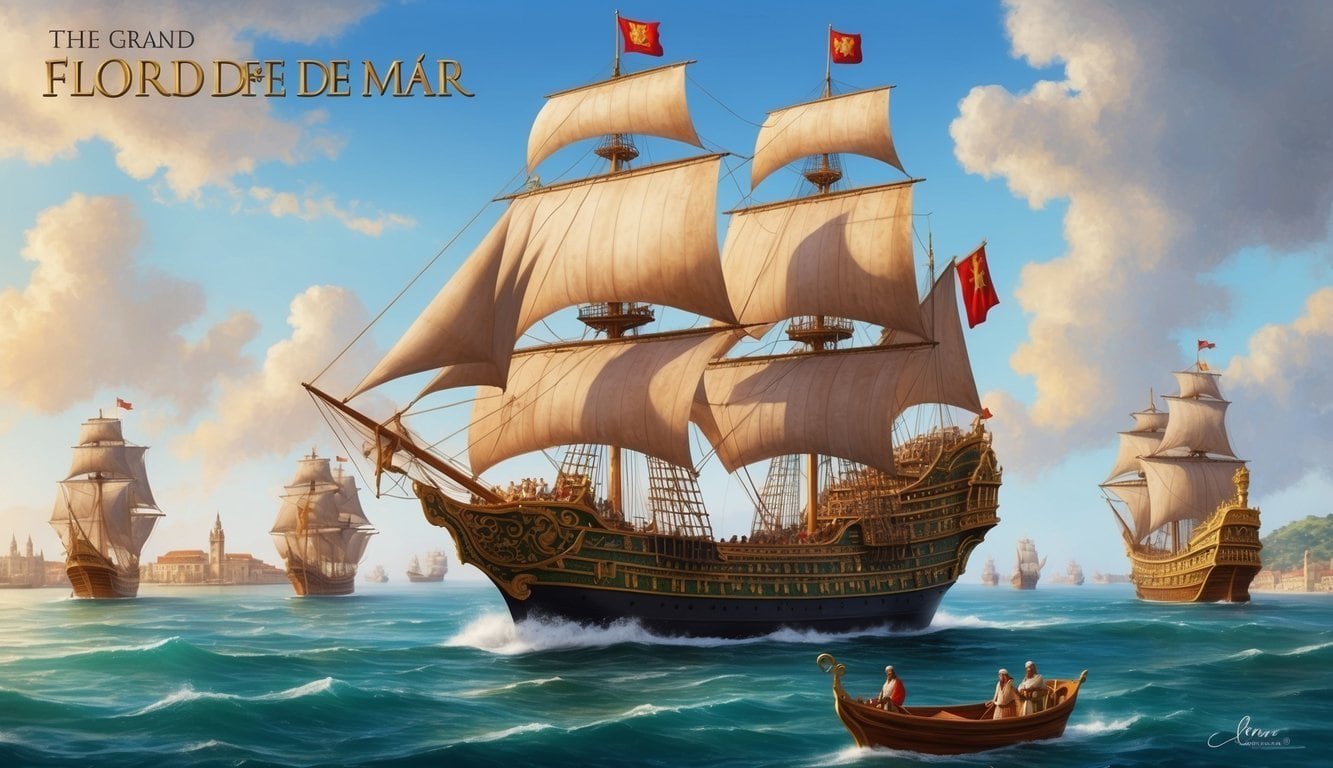
The Portuguese Empire launched many exciting voyages in the 15th and 16th centuries. These trips opened up new trade routes and connections with far-off lands. Let’s look at how Portugal became a leader in ocean exploration and trade.
Establishing Sea Routes
Brave Portuguese sailors set out to find new paths across the seas. In 1498, Vasco da Gama made history by sailing around Africa to reach India. This opened up a sea route to Asia for European traders.
Portuguese ships like the Flor de la Mar helped build these new routes. They sailed to places like Siam (now Thailand) and the Malay Peninsula. The ships were sturdy and could handle long ocean trips.
Portugal’s king sent out many explorers during this time. They mapped coasts, found new lands, and set up trading posts. This era became known as the Age of Exploration.
The Spice Trade and Portuguese Navigators
The spice trade was a big reason for Portuguese voyages. Spices from Asia were worth a lot of money in Europe. Portuguese ships brought back things like:
- Cinnamon
- Pepper
- Cloves
- Nutmeg
Portuguese navigators became experts at sailing to Asia and back. They used new tools and methods to find their way across the oceans. These sailors were some of the best in the world.
Trading posts called factories were set up in Asia. From there, Portuguese merchants could buy spices and other goods. The Flor de la Mar and ships like it carried these treasures back to Europe.
Shipwrecks in the History of Maritime Ventures
Shipwrecks have played a big role in ocean exploration and trade. They often tell us about the past and sometimes hold hidden treasures.
Notable Shipwrecks in the Indian Ocean
The Indian Ocean has seen many ships sink over the years. One famous wreck is the Flor de la Mar, a Portuguese ship that sank in 1511.
The Flor de la Mar was one of the largest ships of its time. It was 118 feet long and weighed 400 tons. People think it carried a lot of gold and gems when it sank.
This ship is important in history because it shows how risky sea travel was back then. Even big, strong ships could sink in bad storms.
The wreck of the Flor de la Mar has never been found. Many people have tried to find it because of the treasure it might hold. Some think it could be worth billions of dollars today.
Shipwrecks like this one help us learn about old trade routes and what life was like on these big ships. They give us a peek into the past and the dangers sailors faced.
The Pursuit of Lost Treasures
The quest for the Flor de Mar’s riches has captured imaginations for centuries. Treasure hunters and maritime experts have searched tirelessly for this legendary ship and its priceless cargo.
Treasure Hunters and Maritime Archaeology
Many treasure hunters have tried to find the Flor de Mar over the years. In 1992, Bob Marx thought he found the wreck after just three days of searching. Sadly, his project was stopped before he could explore more.
Maritime museums often display artifacts from shipwrecks. These help people learn about old ships and sea exploration. For the Flor de Mar, there’s not much to show yet.
The ship’s treasure trove is said to be worth $2.5 billion. This huge value keeps drawing treasure hunters to look for it. They use modern tech like sonar and underwater robots to search the sea floor.
Robert Marx, a well-known treasure hunter, spent years looking for sunken ships. He wrote books about his adventures and the treasures he found. His work inspired others to keep searching for lost riches like the Flor de Mar’s.
Notable Locations in the Tale of Flor de la Mar
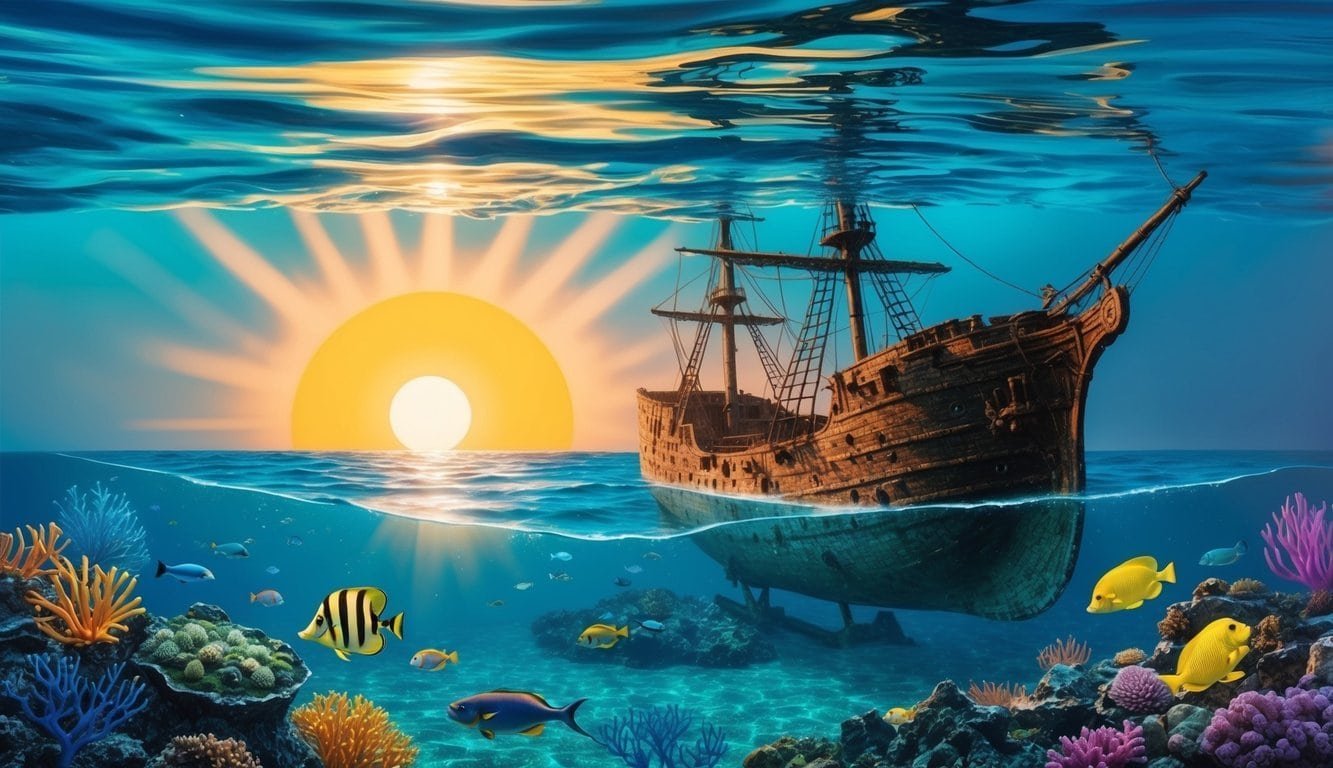
The Flor de la Mar’s journey took it to many important places in the Indian Ocean region. These locations played key roles in Portugal’s trading empire and the ship’s ultimate fate.
Malacca, Sumatra, and Beyond
The Flor de la Mar sailed to Malacca in 1511 as part of Portugal’s conquest of this vital trading hub. Malacca sat at a strategic point on the Strait of Malacca between Sumatra and the Malay Peninsula. It was a wealthy port that controlled trade between China and India.
After taking Malacca, the Portuguese loaded the Flor de la Mar with treasure to send back to Portugal. But the ship never made it. It sank in a storm off the coast of Sumatra, taking its riches to the bottom of the sea.
Trading Ports and Conquered Lands
The Flor de la Mar visited many other important locations during its nine years of service. These included:
• Goa: Portugal’s main base in India
• Mozambique Channel: A key shipping route
• Socotra: An island off the Horn of Africa
• Khor Fakkan: A port on the Gulf of Oman
• Kalhat and Sohar: Omani coastal towns
The ship helped establish Portugal’s trading empire in the Indian Ocean. It carried goods, troops, and officials between these far-flung ports as Portugal built its network of bases and trading posts across the region.
Significant Figures in Portugal’s Maritime History

Portugal’s seafaring history is full of brave explorers and powerful rulers. These people shaped the Age of Discovery and left a lasting mark on world trade and culture.
Heroes of the Portuguese Seafaring Sagas
João da Nova was a famous Portuguese explorer. He found important islands in the Atlantic and Indian Oceans. His discoveries helped Portugal build its sea empire.
D. Francisco de Almeida became the first Portuguese viceroy of India. He set up trading posts and fought sea battles to protect Portuguese interests. His “Blue Water Policy” focused on controlling the seas rather than land.
Tristão da Cunha led important voyages to India. He explored new trade routes and helped establish Portuguese power in the East. The remote Atlantic islands he found still bear his name today.
Legacy of the Sultan of Malacca
The Sultan of Malacca ruled a wealthy trading port. His city was a hub for spices and goods from all over Asia. Many ships from different countries came to trade there.
When the Portuguese took over Malacca, they found great riches. The sultan’s palace held tons of gold, gems, and precious items. This treasure showed how important Malacca was as a trade center.
The fall of Malacca changed trade in Southeast Asia. It marked the start of European control in the region. The sultan’s legacy lived on in stories of lost treasure and a golden age of trade.
The Impact of the Flor de la Mar on Modern Culture
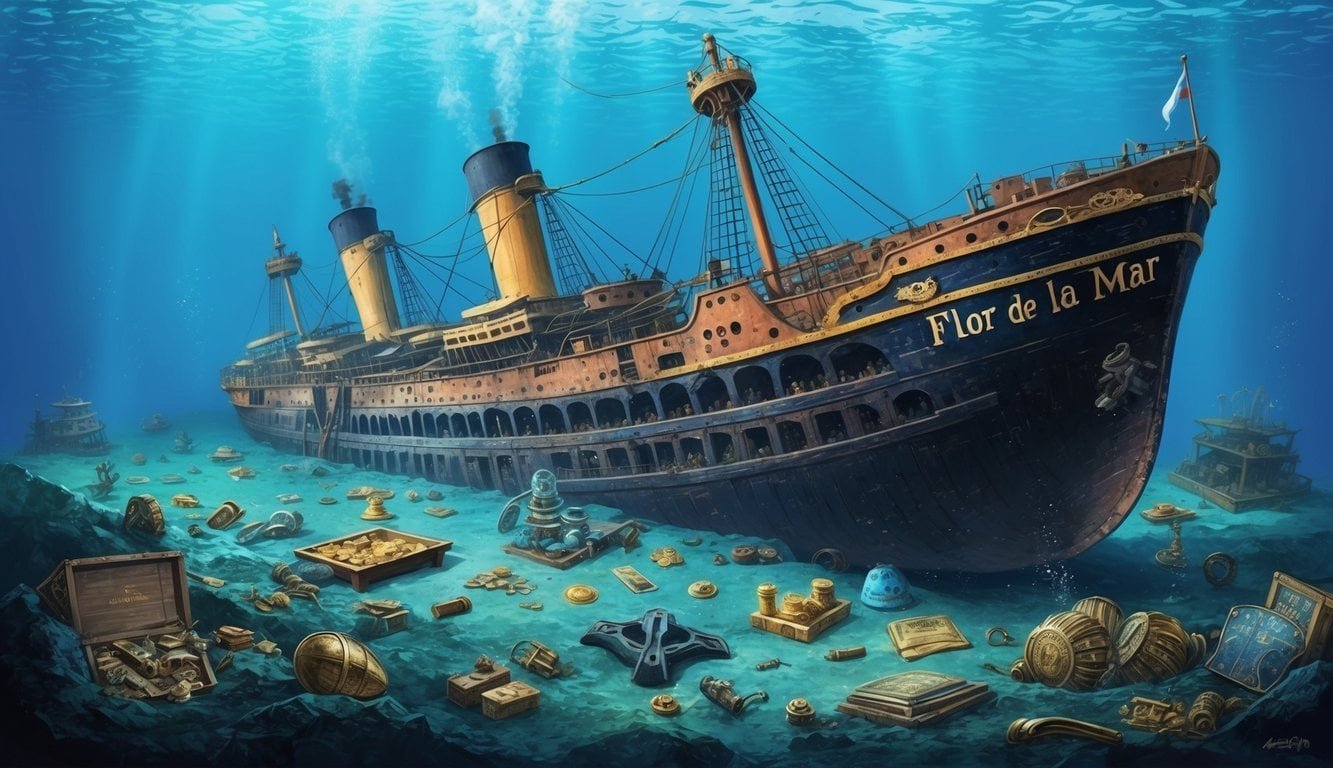
The story of the Flor de la Mar has captured imaginations for centuries. This Portuguese carrack’s tale of wealth and mystery continues to influence popular culture today.
Literature and Film
The Flor de la Mar has inspired many books and movies. Authors love to write about the ship’s final voyage and its legendary treasure. Some novels imagine brave divers searching for the lost riches.
Adventure films often feature characters hunting for the Flower of the Sea’s gold. These stories mix history with exciting quests. They show the Age of Exploration in a thrilling light.
TV documentaries explore the real history of the Flor do Mar. They talk about its role in maritime trade and its tragic end. These shows help people learn about Portuguese carracks and sea exploration.
The mystery of the Frol de la Mar’s treasure keeps it popular in fiction. It lets people dream about finding lost fortunes. The ship’s story connects modern audiences to the excitement of past adventures.
Understanding the Archaeological Challenges

Finding the Flor de Mar’s treasure is no easy task. The ship sank over 500 years ago, leaving archaeologists with big hurdles to overcome.
Depth of the Sea, Difficulty of Discovery
The Flor de Mar sank in 1511, likely in deep waters off Sumatra. This makes finding the wreck very tricky. The sea floor in this area can be thousands of feet deep.
Searching such depths requires special equipment. Sonar and underwater robots are needed to scan the ocean bottom. However, locating a 16th-century shipwreck is like finding a needle in a haystack, even with high-tech gear.
Time has also taken its toll. Wood rots away underwater, and metal rusts. After centuries, little may remain of the ship itself. This makes spotting wreckage even harder.
Currents and storms can spread debris over a wide area too. The treasure might be scattered across the sea floor, not all in one place.

